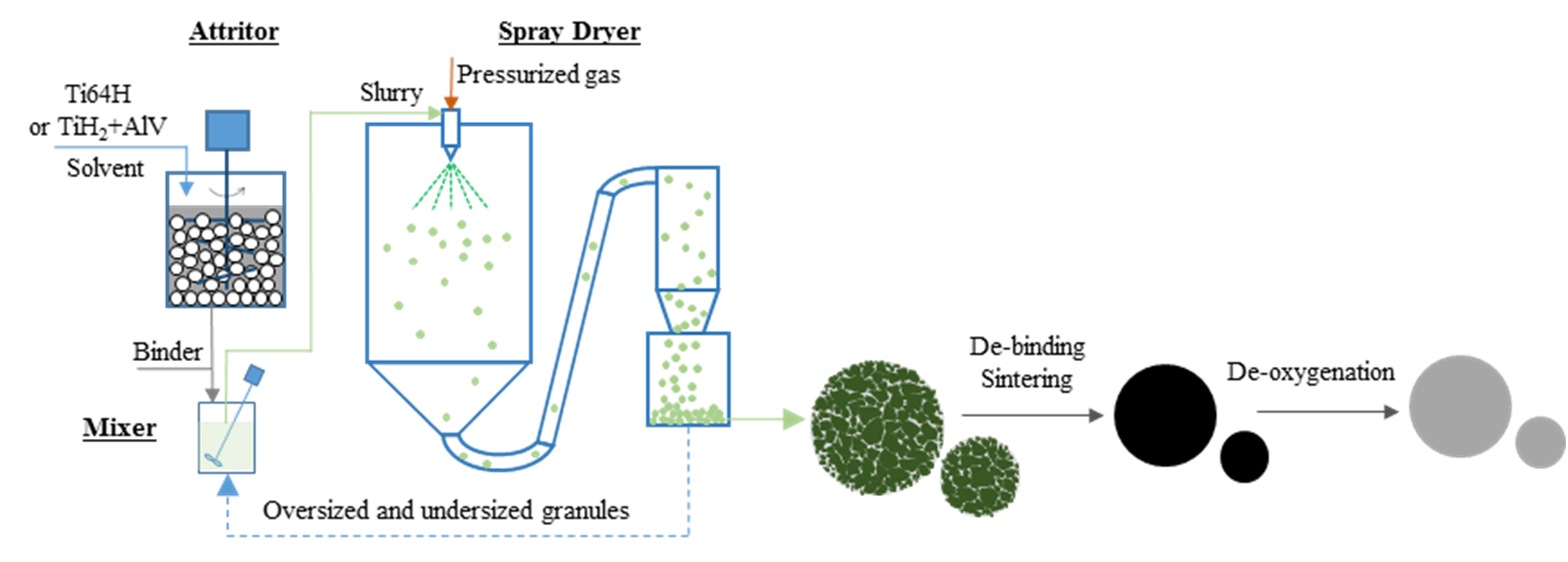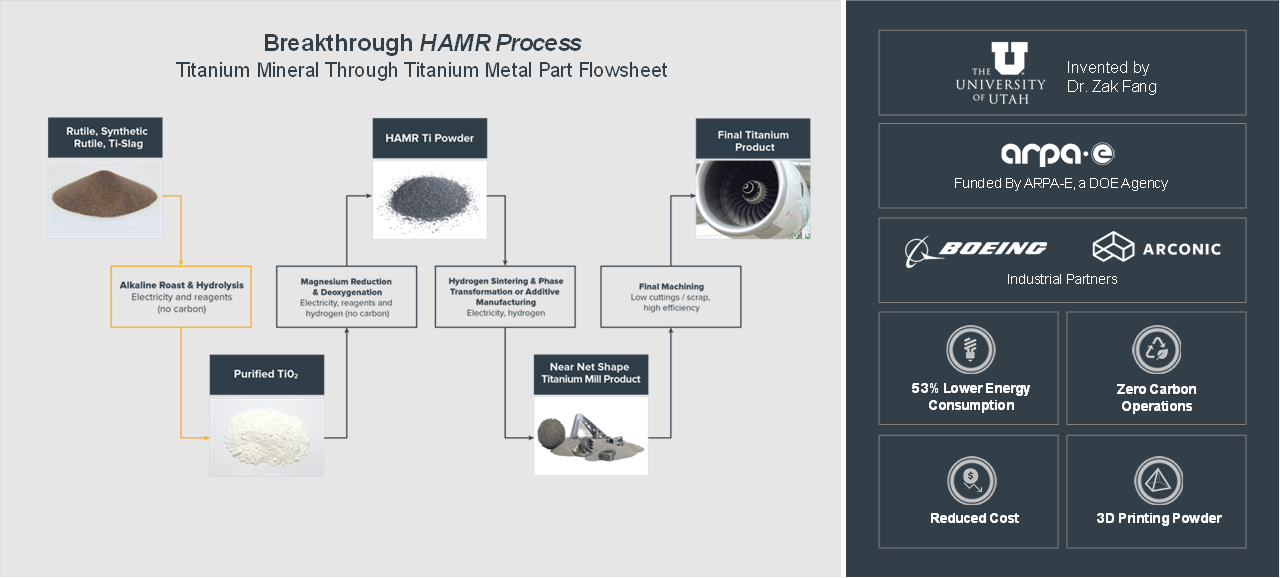The 3D printing industry loves titanium. This is largely due to the fact that the aerospace segment drove the development of metal 3D printing and prefers this metal for its great strength-to-weight ratio. However, compared to “steel, aluminium, cast iron or brass, the extraction of titanium alloys is associated with the highest carbon footprint. In extracting one kg of titanium alloy, 55kg of carbon is produced,” according to Rajemi et al. Japanese metal maker Toho Titanium suggests that “[p]roducing a tonne of titanium can emit around 10 tonnes of carbon dioxide gas in the current routes.”
If additive manufacturing (AM) wishes to maintain its sustainable image, it may have to confront the emissions associated with its favorite metal. One partnership seeks to tackle the carbon footprint of titanium powders for 3D printing through a novel production method. Powder bed fusion leader EOS has signed an agreement with Aussie company Hyperion Metals Limited (ASX: HYM) to develop “low cost, low-to-zero carbon titanium metal powders.”
Hyperion is working to scale up and commercialize a process developed Dr. Z. Zak Fang and his team at the University of Utah, with funding from the Department of Energy’s ARPA-E program. Dubbed hydrogen assisted magnesiothermic reduction (HAMR), the technology is a thermochemical process that exposes titanium oxides to hydrogen gas to create titanium metal. Overall, HAMR is said to reduce carbon emissions by removing workflow stages, eliminating manufacturing inputs, and cutting the overall energy consumption of titanium production. Another Fang/Utah process, called granulation-sintering-deoxygenation (GSD), is meant to be able to produce spherical titanium powders a much lower cost than typical methods.

A flow chart outlining the granulation-sintering-deoxygenation process. (Image courtesy of University of Utah.)
With EOS, Hyperion will perform a technical and economic evaluation of titanium powders made with HAMR and GSD, as well as the recyclability of titanium with those processes. They will further examine the environmental and sustainability aspects of the materials produced via HAMR and GSD to determine how they compare to conventional powder making processes for AM.

A350 titanium cable mount on the front spar of the vertical stabilizer made with EOS 3D printer. (Image courtesy of EOS.)
“Our goal is to create innovative product and process solutions that help accelerate responsible manufacturing and sustainable solutions via industrial 3D printing technology. What is exciting is the potential for new, low cost, low carbon titanium powders that will provide organizations with both significant economic benefits and more sustainable solutions. The HAMR and GSD technology has the potential to lower the barriers to entry for titanium into existing markets of more conventional materials and will enable completely new mass market applications where high strength to weight are critical – such as electric vehicles,” said Sascha Rudolph, Commercial Director Metal Materials at EOS. “Titanium alloys are very widespread and versatile high-performance materials in AM, used by our customers in ingenious part designs covering everything from hip implants to Formula One parts to aircraft components. One barrier to wider adoption of AM is material cost – caused on one hand by the scarcity of the raw material, but on the other hand by the extremely complex and resource-intense methods of extraction. Our partnership with Hyperion changes this landscape and allows us to deliver cost- and resource-efficient next gen methods of extracting the value form this extremely valuable and scarce natural resource all the while reducing the negative impact on our environment. This collaboration means more to us than two technology companies joining forces to drive development of AM, it is also another great step on the journey of realizing the EOS vision of sustainable manufacturing.”
As discussed recently, I have an initial skepticism about publicly traded mining companies, particularly those based in Australia, due to the fraud that has been found within mining that can often use the promise of new technologies as a cover for pump-and-dump trading schemes. In the case of Hyperion, the company seems to have established partners in the Department of Energy, Boeing and Arconic. Its technology has been developed by researchers at the University of Utah and it has mining concessions in Tennessee that are thought to have the necessary titanium deposits for its HAMR process. In other words, the company seems to be a serious and established firm.
If all goes well, we should know about the results of the project by June 2022, when the memorandum of understanding will either be terminated or extended by the partners involved.
Subscribe to Our Email Newsletter
Stay up-to-date on all the latest news from the 3D printing industry and receive information and offers from third party vendors.
You May Also Like
APWORKS Expands Scalmalloy 3D Printing with Farsoon and CNPC Partnerships
In the lead up to Formnext 2024, Airbus subsidiary APWORKS has teamed up with Farsoon Technologies and CNPC Powder to expand the production and application of Scalmalloy, APWORKS’ high-strength, corrosion-resistant...
3D Printer OEM Axtra3D Raises Nearly $10M in Series A
Axtra3D, an original equipment manufacturer (OEM) of 3D printers leveraging the company’s patented Hybrid Photosynthesis (HPS) technology, has received another $4.5 million in Series A financing, bringing its total Series...
Caracol AM to Launch its First Metal 3D Printer at Formnext 2024
Caracol AM, a US-Italian original equipment manufacturer (OEM) of large-format additive manufacturing (AM) systems, has announced the launch of the company’s first metal printer, Vipra AM. A directed energy deposition...
ADDIMETAL to Debut First French Metal Binder Jetting 3D Printer at Formnext 2024
ADDIMETAL, a French original equipment manufacturer (OEM) of additive manufacturing (AM) hardware, will debut its first product, the K2-2 metal binder jetting (MBJ) printer, at Formnext 2024 in Frankfurt, Germany...







































